A week had gone by on the searing and crowded coast. Now I would return to the cooler and uncongested hinterland. Between Mount Lebanon and the Syrian Anti-Lebanon Mountains, marking the north end of the Great Rift Valley that extends all the way to southeast Africa, lies the Beqaa Valley. In contrast to my previous short transfers, today I had a long journey to the country’s northeast.
I was up before daybreak because my forgetting to close the window screen didn’t go unnoticed by the mosquitoes. I descended to the highway and boarded the first minivan bound for the capital. No sooner than I disembarked at Beirut’s northern bus station, whence we had departed a couple of weeks earlier, an erratic codger almost dragged me by the elbow to his pirate taxi. After bargaining down his initial offer, I entered his rattletrap.
A long-burnt-out cigarette hanging from his lips, babbling gibberish to himself whenever he wasn’t busy cussing other drivers, he drove me through Beirut’s anarchic thoroughfares. Worse than his prolixity was his dumb habit of accelerating behind decelerating cars, narrowly dodging a collision at least once per minute.
On the way, we drove past the site of the infamous 2020 chemical warehouse blast: one of the most catastrophic man-caused non-nuclear explosions in history. The sea had claimed the massive crater left behind amid an apocalyptic setting of debris and devastated port facilities. The spectacle was terrifying.
Glad to be in one piece, I got off at Beirut’s southern bus station of Kola. Out of an immense fleet of vans, amid a throng of touting drivers, I spotted the one bound for my direction. I was the first passenger and seized the waiting to grab a spinach pastry from the pop-up street-side bakery.
The passengers gathered fast. Crammed in the cramped vehicle, we hit the road away from the coast. The trip was long and uncomfortable, but it became more bearable as we gained height to lower temperatures and prettier sceneries. Past the ridge and far below, a whole new scene came into sight: wedged between the parched mountain ranges of the Levant, a secluded oasis of green farms, scattered towns, and meandering rivers. Early afternoon, we finished up at a transport nexus on the outskirts of Zahle, the principal city in the Beqaa Valley.
This story is an excerpt from my book "Backpacking Lebanon", wherein I recount my one-month journey around this fascinating country. Check it out if you like what you're reading.
I hopped straight onto the next bus for my final destination further north through the valley. It was full upon departure, but all the other passengers, one after another, got off along the city’s suburbs until I was the only one left. Then the driver stopped to tell me he’d have to turn around unless I paid him a taxi fare. We entered an intense argument. In combined English, French, and Greek (it didn’t make a difference), I was trying to explain to him that he shouldn’t have picked me if he wasn’t bound for where I was going. He was countering in Arabic, in essence stating that he would only budge for a ten-dollar bill. I weighed the hitchhiking option, but daunted by the extreme heat and utter lack of shade, I gave in and swallowed the ripoff. Before long, we were crossing the first military checkpoint at the approach to Baalbek.
Once called Heliopolis, this noble city stood among antiquity’s most sacred sites. Pilgrims from all corners of the known world flocked to its revered temples from the dawn of history until the downfall of paganism. Nowadays, besides an esteemed archeological hub, Baalbek constitutes Hezbollah’s northern stronghold.
The long, straight road leading to the city center was festooned with oversized Hezbollah flags spaced about ten meters apart. These were interspersed by big quote posters of dead Shias like Qasem Soleimani, Ayatollah Khomeini, and Ali. Outside of the mosques stood black, stern campaign booths where Hezbollah’s headbanded PR specialists handed pamphlets accompanied with free drinks to passers-by.
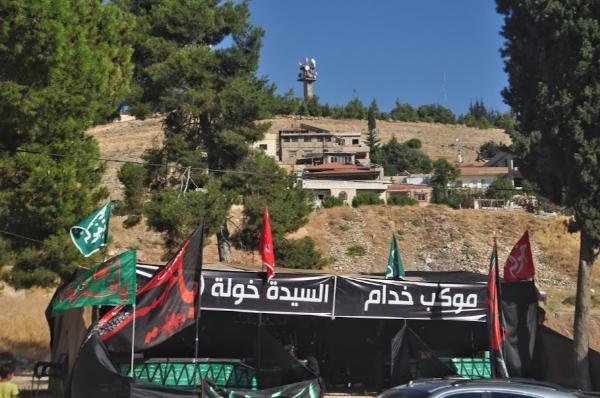
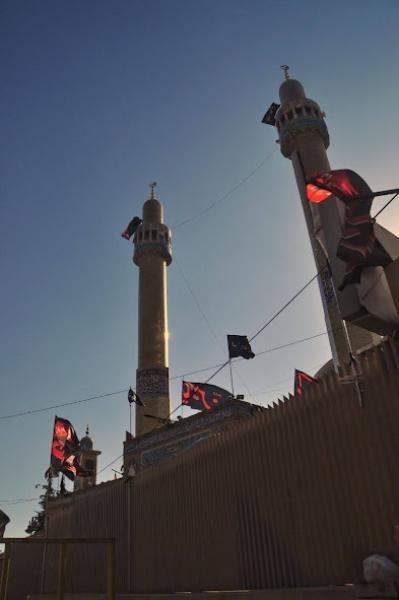
I got off in the center and walked to the hotel I’d reserved yesterday over the phone. It was in a ramshackle, but charming in its wistful way, century-old building. A nearly as old, benign man ran it by himself and showed me to my room that had a balcony looking out to the ancient ruins. I would visit them when they opened again in the morning. This afternoon, I set out to explore the wider city.
I first walked along the fence of the archeological site, and souvenir peddlers were quick to accost me. Out of various knickknacks they hawked, the highlight was the Hezbollah T-shirts. I should be like: “Yes, of course, just as I was wondering what to wear at the airport.” Curious were also the collections of bogus ancient coins. They were mangled and patinaed and depicted figures such as Alexander the Great and Octavianus Augustus. I mulled over their provenance. Somebody must have launched a quite elaborate counterfeiting enterprise. Believing the vendors’ claim—that they found the coins in the ruins—was obviously out of the question because, if that was ever true, even for once, they wouldn’t be peddling them in the streets together with trinkets and Kalashnikov tops.
By the site’s entrance, there was a short lineup of touristic cafes and restaurants. I sat for a coffee in the shade and was joined by a bunch of Syrian lads. One had, before returning to Lebanon for whatever reason, carried off the complete refugee trail to Germany and picked up a lot of English, Greek, and Italian along the way. We had an interesting chat, and he gave me some good tips about Baalbek.
Besides its temples, Baalbek is renowned among archeology lovers for the six massive megaliths left in its ancient Roman quarry. The largest one, called the forgotten stone, with an estimated weight of 1,600 tonnes (about as much as a fully outfitted and fueled space shuttle), is the heaviest discovered monolith ever quarried in history. I reached them in a brief walk from the city center and found them lying unguarded and unfenced. Above the quarry, there was a Christian cemetery atop a hill where I climbed for a panoramic view of the city. Weathered colonnades and gilded minarets dominated the skyline.
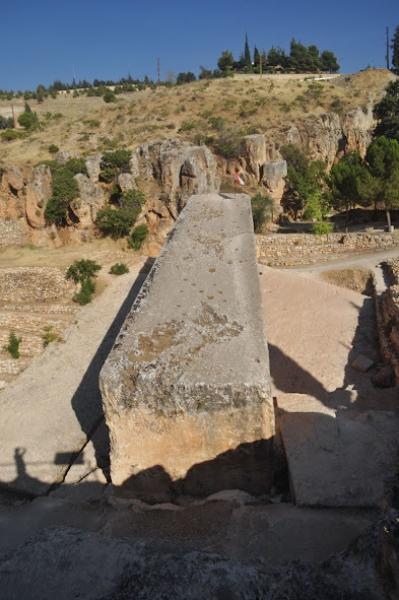
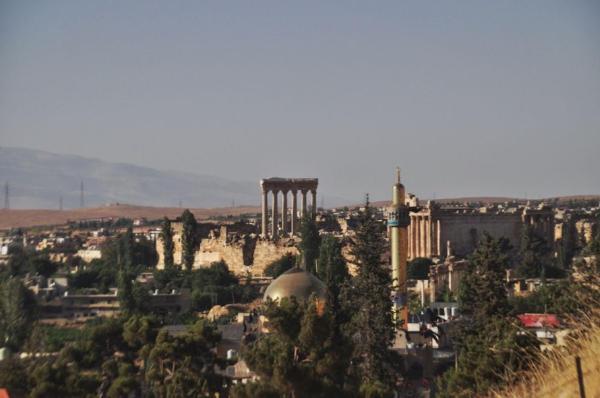
Back in the center, I took a main street heading west along a contaminated river. It led into a more modern part of the city where prayer-echoing mosques and Hezbollah recruitment kiosks coexisted with fancy restaurants and boutiques. The street finished at a large, neat park packed with families picnicking around redolent hookahs. After a juice on the spot and a kebab on the way back, I went home to rest before tomorrow’s visit to the archeological site.
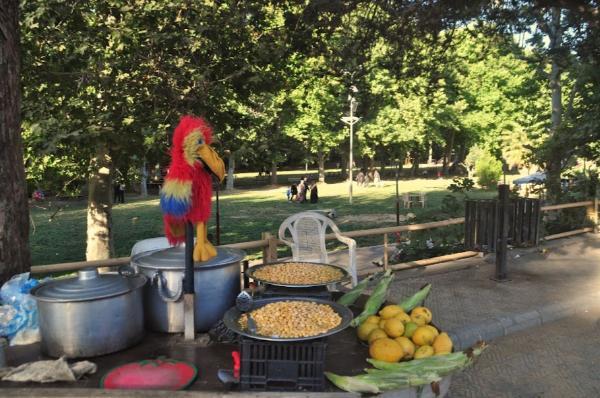
Having grown up in Greece and traveled to half of the world’s countries, I have visited not a few ancient sites in my life. Still, I would unhesitatingly rank Ancient Heliopolis very high in the list of the ones that impressed me the most; perhaps sharing the top podium with Pompei. But whereas Pompei impressed me for its integrity, Heliopolis impressed me for its elegant grandeur.
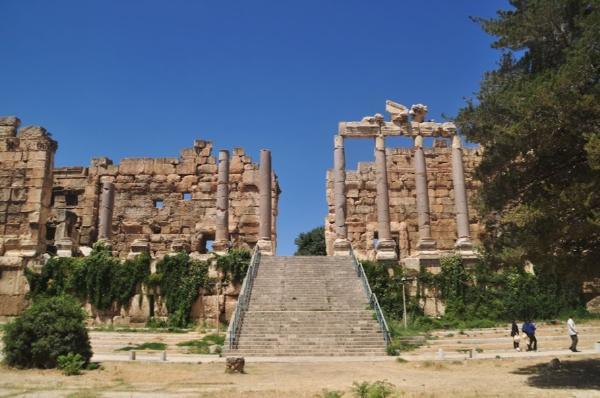
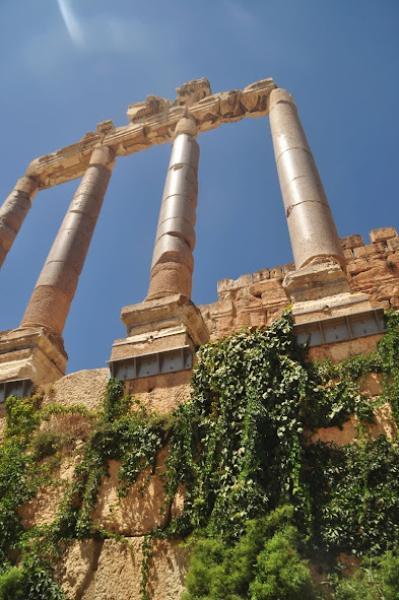
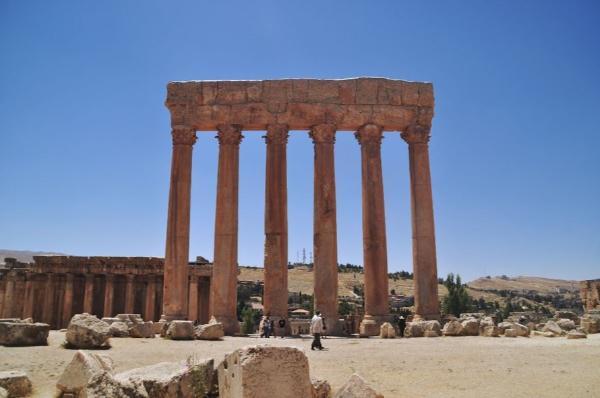
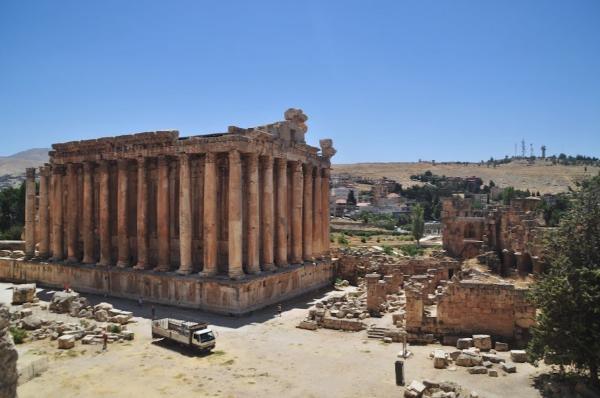
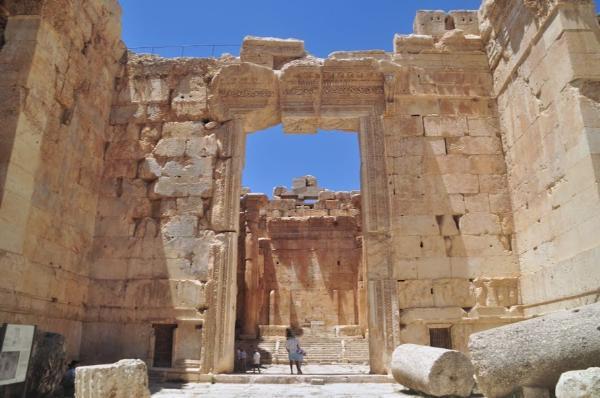
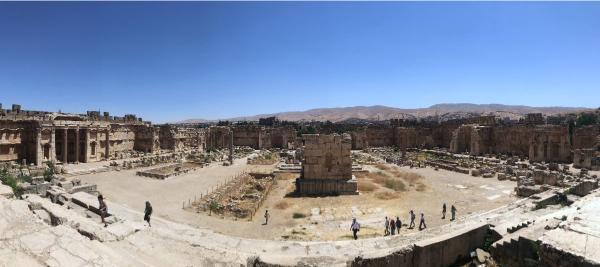
Wandering around the extensive site, amid broad courts and colossal temples, I couldn’t help but plunge into the rapture of abstract divinity. The sense of solitude enhanced the experience. Unlike most major archeological sites, which flood with tourists to the point of resembling funfairs, here there were only a handful of dispersed visitors. I spent the better part of the morning exploring the site and indulging in historical reveries. And when the temperature soared enough to bring me back to the reality of the 2023 summer wave, I retreated to my room and chilled until tomorrow’s departure.
Photos
View (and if you want use) all my photographs from Baalbek.
Accommodation and Activities in Lebanon
Affiliation disclosure: By purchasing goods or services via the links contained in this post, I may be earning a small commission from the seller's profit, without you being charged any extra penny. You will be thus greatly helping me to maintain and keep enriching this website. Thanks!
Stay22 is a handy tool that lets you search for and compare stays and experiences across multiple platforms on the same neat, interactive map. Hover over the listings to see the details. Click on the top-right settings icon to adjust your preferences; switch between hotels, experiences, or restaurants; and activate clever map overlays displaying information like transit lines or concentrations of sights. Click on the Show List button for the listings to appear in a list format. Booking via this map, I will be earning a small cut of the platform's profit without you being charged any extra penny. You will be thus greatly helping me to maintain and keep enriching this website. Thanks!
